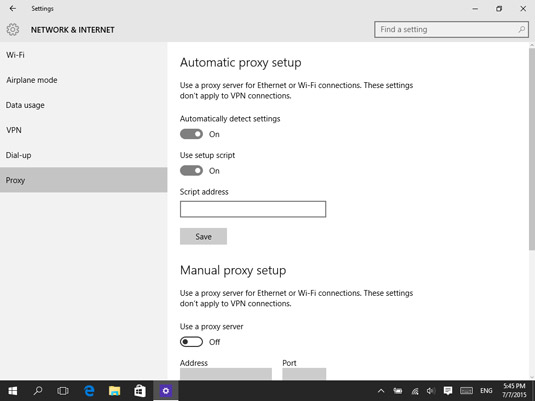There are many reasons why someone might want to create a proxy company. Maybe they want to keep their personal assets separate from their business assets. Maybe they want to limit their liability in case of lawsuits or debt.
Or maybe they just want to save on taxes. Whatever the reason, there are a few things you need to do in order to set up a proxy company. First, you need to choose the right legal structure for your business.
A sole proprietorship, for example, offers no protection for your personal assets if your business is sued. A limited liability company (LLC) or corporation offers more protection, but also comes with more paperwork and regulations. Choose the legal structure that makes the most sense for your business and your goals.
Next, you need to obtain the necessary licenses and permits for your business. This will vary depending on the type of business you’re running and where you’re located, so be sure to do some research ahead of time. You don’t want to get fined or shut down because you didn’t have the right permit!
Finally, open up a bank account in the name of your proxy company. This will help further separate your personal finances from your business finances, which can be helpful come tax time or if you ever find yourself in legal trouble. Keep good records of all income and expenses so that you can easily prove how much money your business is making (or losing).
- A proxy company is a legal entity that is used to protect the assets and liabilities of its owners
- The proxy company is created by filing the necessary paperwork with the state in which it will be registered
- The paperwork required to create a proxy company varies from state to state, but typically includes the Articles of Incorporation, Certificate of Formation, and Operating Agreement
- The first step in creating a proxy company is to choose the state in which it will be registered
- This decision should be made based on the laws of the state and the business needs of the company
- Next, the paperwork required for registration must be completed and filed with the appropriate government office
- The articles of incorporation, certificate of formation, and operating agreement are typically required
- Once the proxy company has been created, its owners can then transfer their assets and liabilities to it
- This will help protect these individuals from personal liability in case the business fails or incurs debts
How to Create a Proxy Server in Linux
A proxy server is a computer that acts as an intermediary between your computer and the Internet. It allows you to send and receive data over the Internet without revealing your true identity or location. When you connect to a website, the proxy server will route your request through its own IP address instead of yours.
This makes it appear as if you are accessing the site from the proxy server’s location, not your own. Creating a proxy server in Linux is a relatively simple task that can be accomplished by following these steps:
1) Choose a distribution of Linux to install on your computer. For this tutorial, we will be using Ubuntu Server 14.04 LTS.
2) Download and install Ubuntu Server 14.04 LTS onto your computer. Make sure to select “Install Ubuntu alongside Windows” when prompted during installation so that both operating systems can coexist on the same machine.
3) Once Ubuntu is installed, launch it and navigate to “Applications -> System Tools -> Terminal” to open up a command prompt.
4) In order to install the necessary software for our proxy server, we must first update apt-get’s package list by typing in “Sudo apt-get update” (without quotes). Press enter and then type in your password when prompted – this is required since we are using Sudo, which stands for superuser do.
Sudo gives us temporary access to run commands with root privileges; in this case, we need root privileges to run apt-get update since it modifies system files.
5) Now that our package list is up-to-date, we can install Squid3, which is a popular caching and forwarding HTTP web proxy program, by typing in “Sudo apt-get install squid3” (again, without quotes).
Press enter once more and enter your password when prompted. This process may take some time depending on your Internet connection speed.

How Can I Create My Own Proxy?
There are many ways to create your own proxy server. The most common method is to use a web hosting service that supports proxy servers. There are also some software packages that you can install on your own computer to create a proxy server.
However, these methods require some technical knowledge and may not be suitable for everyone. If you want to create a proxy server without any technical knowledge, you can use one of the many online services that allow you to do so. These services usually have a simple interface and allow you to specify the URL of the website that you want to access through the proxy server.
Once you have set up an account with the service, you will be given an IP address that you can use to access the website via the proxy server. Most of these online services are free, but there are also some paid ones that offer more features or higher speeds. Before choosing a service, make sure to check its terms of service carefully so that you know what activities are allowed and what aren’t.
How Do Proxy Companies Work?
When you browse the internet, your computer sends out a request for information to the server of the website you’re trying to access. The server then responds with the requested information. However, if you use a proxy server, your request will first go through the proxy server before it reaches the website’s server.
The proxy server acts as a middleman between your computer and the internet. It can be used for a variety of purposes, such as hiding your real IP address or location, bypassing internet filters and censorship, and accessing blocked websites. There are many different types of proxy servers available, each with its own set of features and benefits.
Some common types of proxy servers include web proxies, VPN proxies, SOCKS proxies, and HTTP proxies. Web proxies are perhaps the most popular type of proxy server. They are easy to set up and use, and there are many free web proxy services available online.
All you need to do is enter the URL of the website you want to access into the web proxy’s interface, and then click on the “Browse” button. The web proxy will fetch the requested website on your behalf and display it in its own interface. VPN (Virtual Private Network) proxies work in a similar way to web proxies, but they offer an added layer of security by encrypting all data that passes through them.
This makes it difficult for anyone monitoring your traffic to see what websites you are visiting or what data you are sending or receiving. VPN proxies also allow you to change your IP address so that it appears as though you are located in another country or region (this is known as “geo-spoofing”). This can be useful for accessing geo-blocked websites or content such as Netflix US from outside America.
.
How Do Free Proxies Make Money?
There are a few ways that free proxies make money. The first is by selling advertising space on their site. This is a common method for many websites and it can be effective for proxies as well.
Proxies can also make money by selling user data, such as IP addresses and browsing history, to third parties. Finally, some proxies may display pop-up ads or other forms of advertising that generate revenue for the proxy owner.
How Much Does a Proxy Service Cost?
There are a lot of different proxy services out there, and the cost can vary quite a bit. Generally speaking, you can expect to pay anywhere from $5 to $30 per month for a good proxy service. Of course, this is just a general range – some services may be cheaper or more expensive than this.
When choosing a proxy service, it’s important to consider what features you need and how much bandwidth you’ll be using. Some services offer basic features for a lower price, while others include more advanced options like dedicated IP addresses and unlimited bandwidth for a higher price. Ultimately, it’s up to you to decide which features are worth paying for and how much you’re willing to spend each month.
How to make Proxies – Datacenter proxies Generator – Cloud Proxy creator
Conclusion
Are you looking to create a proxy company? If so, there are a few things you need to do in order to get started. First, you will need to choose a business structure for your proxy company.
There are several options available, so be sure to select the one that best suits your needs. Next, you will need to obtain the necessary licenses and permits required by your state or country. Once you have everything in place, you will need to open a bank account and establish credit lines for your business.
Finally, you will need to create marketing materials and start promoting your company. By following these steps, you can be well on your way to starting a successful proxy company.
